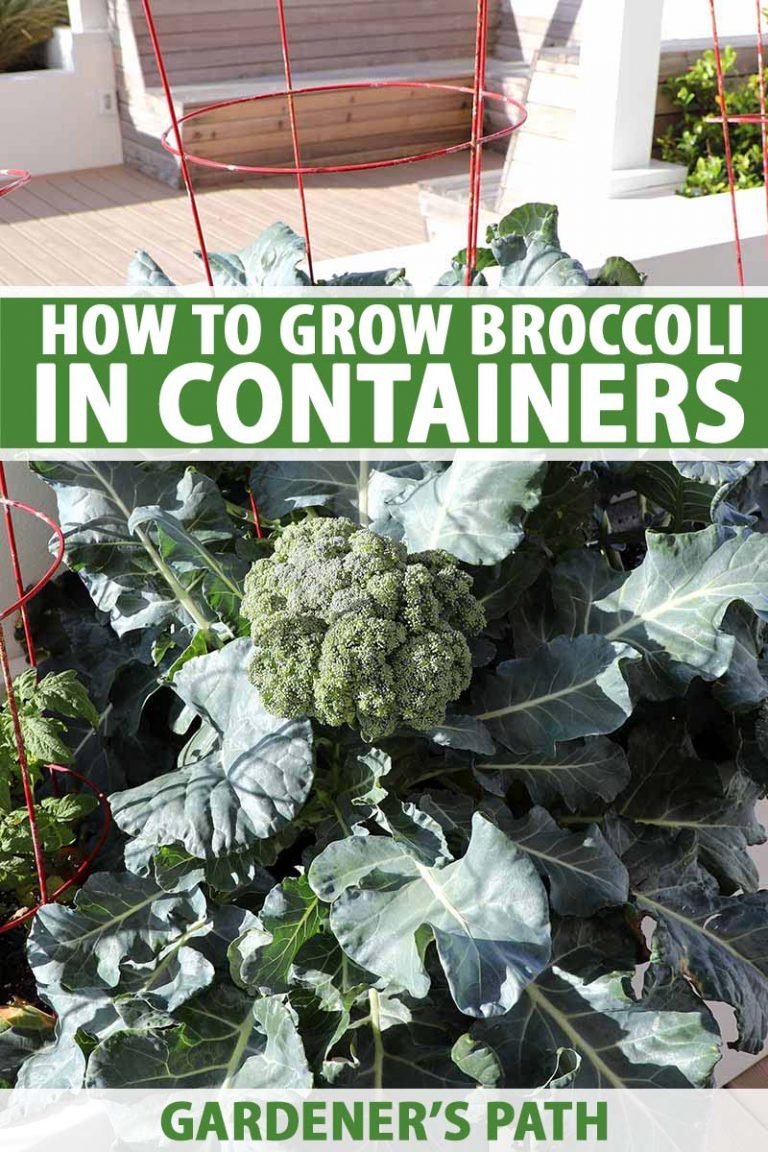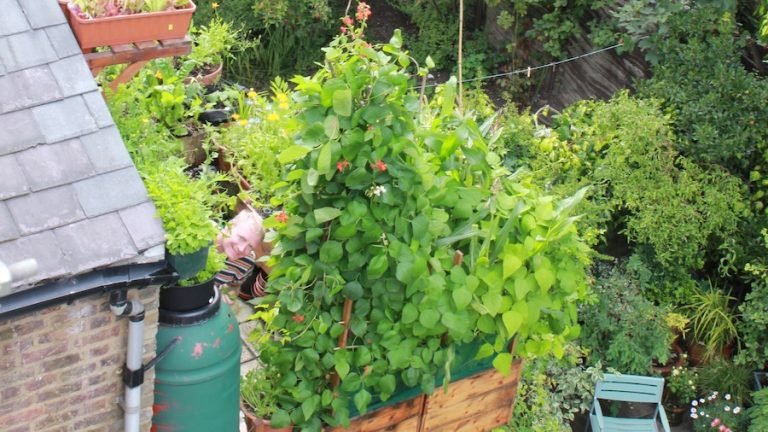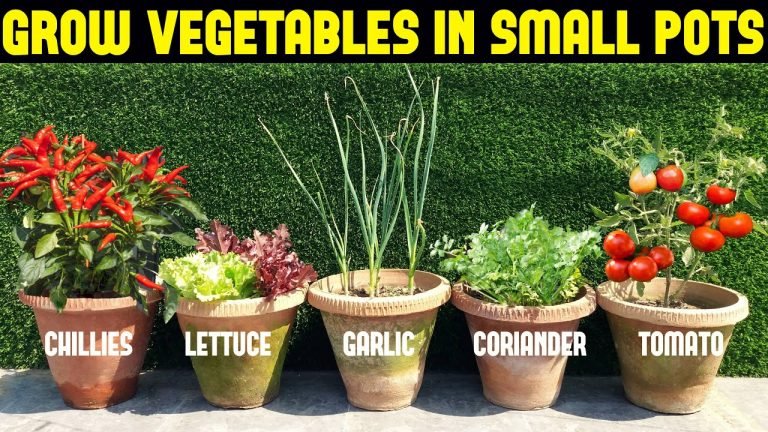how to grow sweet peppers in a pot – [Beginners Guide]
Hello there!
Are you looking to start growing your own sweet peppers, but don’t have a big garden or outdoor space? No worries, growing sweet peppers in pots is a fantastic option, and I’m here to tell you why!
As someone who has grown sweet peppers in pots for several years now, I can attest to the many benefits. Not only does it provide fresh, delicious peppers right at your fingertips, but it also adds a pop of color to your indoor or outdoor space. And the best part? It’s incredibly easy and low maintenance!
Growing sweet peppers in pots allows you to control the growing conditions, such as soil type, moisture, and sunlight, much more effectively compared to growing in the ground. This means that you have the potential for higher yields and better quality peppers. Plus, you can move the pots around to ensure they receive the optimal amount of sunlight, which is crucial for pepper growth and fruiting.
So, why not give it a try? Whether you’re a seasoned gardener or just starting out, growing sweet peppers in pots is a great option that you won’t regret. I’m here to help, so let’s get started!
Pot or container selection
The Perfect Pot for Growing Sweet Peppers
When it comes to growing sweet peppers in pots, the type of pot you use is just as important as the soil and water you provide. Here’s what you need to know about choosing the right pot for your sweet peppers:
Size: A sweet pepper plant can grow up to 2-3 feet tall, so it’s important to choose a pot that accommodates this height. A minimum pot size of 12 inches in diameter and 12 inches in depth is recommended. The larger the pot, the more soil volume, which provides more moisture retention and root space for the plant.
Capacity: One sweet pepper plant per pot is recommended. However, if you have a larger pot, you can plant 2-3 sweet pepper plants per pot, just make sure to provide enough space for the plants to grow and spread out their roots.
Construction: The pot should be made of a material that allows for good drainage. Terracotta pots are a good option because they are porous, which helps prevent water logging. However, they can dry out quickly, so make sure to keep a close eye on the soil moisture. Plastic pots are also a good option because they are lightweight and come in a range of sizes, but they do not offer the same breathability as terracotta pots. Whatever type of pot you choose, make sure it has holes in the bottom for proper drainage.
In summary, when choosing a pot for growing sweet peppers, aim for a pot that is at least 12 inches in diameter and depth, has a capacity for one plant per pot, and is made of a material that allows for good drainage. With the right pot, you’ll be well on your way to growing healthy, productive sweet pepper plants!
Make suitable soil mix
The Ideal Soil Mix for Growing Sweet Peppers
The soil mix you choose for growing sweet peppers is just as important as the pot and water you provide. Here’s what you need to know about the ideal soil mix for sweet peppers:
Type: Sweet peppers prefer a well-draining soil mix that is rich in organic matter. A good quality potting mix is a great option because it’s specifically designed for container-grown plants. Avoid using garden soil, as it can be too heavy and compact, leading to poor drainage and root rot.
Mixture: A good potting mix for sweet peppers should contain a mixture of peat moss, vermiculite, and perlite. These ingredients help to create a light, airy soil mix that retains moisture but also allows for good drainage. You can also add compost or well-rotted manure to the mix for additional nutrients.
Correct Soil Composition: Sweet peppers thrive in soil that has a pH between 6.0 and 6.8. You can test the pH of your soil mix with a soil test kit to ensure it falls within this range. If it’s too acidic, you can add lime to raise the pH. If it’s too alkaline, you can add sulfur to lower the pH.
In summary, the ideal soil mix for growing sweet peppers should be well-draining, rich in organic matter, and have a pH between 6.0 and 6.8. A good quality potting mix, with the addition of compost or well-rotted manure, will provide the right growing conditions for healthy, productive sweet pepper plants!
How to plant the sweet peppers?
How to Plant Sweet Peppers in a Pot
Planting sweet peppers in a pot is a great way to enjoy fresh, homegrown peppers right from your own backyard. Here’s a step-by-step guide to help you get started:
Step 1: Choose a Pot
Select a pot that is at least 12 inches in diameter and depth and has good drainage holes in the bottom. Fill the pot with a well-draining soil mix that is rich in organic matter.
Step 2: Select Your Pepper Plants
Choose sweet pepper plants that are healthy and disease-free. Look for plants with sturdy stems, green leaves, and buds that are just starting to form. Avoid plants with yellow leaves or wilted stems, as they may be stressed or diseased.
Step 3: Plant the Pepper Seedlings
Dig a hole in the soil mix that is slightly larger than the root ball of the pepper plant. Gently remove the plant from its container and loosen the roots if they’re tangled or matted. Place the plant in the hole and fill in around it with the soil mix, tamping down gently to remove any air pockets.
Step 4: Water the Pepper Plants
Water the pepper plants thoroughly to help settle the soil and get the roots off to a good start. Avoid getting water on the leaves as this can encourage disease. Water the plants as needed, making sure the soil stays moist but not waterlogged.
Step 5: Place the Pot in a Sunny Spot
Sweet peppers need full sun to grow and produce well, so choose a spot that gets at least 6 hours of direct sun per day. If you live in a hot climate, you may want to provide some afternoon shade to prevent the plants from getting too much sun and overheating.
Step 6: Provide Support
Sweet pepper plants can get tall and heavy as they grow, so provide a stake or tomato cage to support the plant. This will help keep the plant upright and prevent it from falling over as the fruit begins to form.
With these simple steps, you’ll be well on your way to growing healthy, productive sweet pepper plants in a pot!
How to care for sweet peppers?
Caring for Sweet Peppers in a Pot at Home
Watering Requirement
Sweet peppers need consistent and regular watering to grow and produce well. Here are a few tips for watering your pepper plants:
- Water the plants thoroughly, making sure the soil is moist but not waterlogged.
- Avoid getting water on the leaves, as this can encourage disease and damping off.
- Check the soil moisture regularly, especially during hot or dry weather, and water as needed to keep the soil evenly moist.
Fertilizer Requirement
Sweet peppers need a steady supply of nutrients to grow and produce well. You can fertilize your pepper plants with a balanced, slow-release fertilizer or a water-soluble fertilizer every 2-4 weeks, following the manufacturer’s instructions.
Sunlight Needs
Sweet peppers need full sun to grow and produce well, so choose a spot that gets at least 6 hours of direct sun per day. If you live in a hot climate, you may want to provide some afternoon shade to prevent the plants from getting too much sun and overheating.
Pruning & Training
Sweet pepper plants can get tall and leggy as they grow, so pruning and training can help keep the plants compact and encourage bushier growth. Here are a few tips for pruning and training your pepper plants:
- Pinch off the growing tips of the plants when they reach about 12-16 inches tall to encourage bushier growth.
- Remove any yellow or wilted leaves to keep the plant healthy and prevent disease.
- Provide a stake or tomato cage to support the plant as it grows and to prevent it from falling over as the fruit begins to form.
With proper watering, fertilization, sunlight, pruning, and training, your sweet pepper plants will grow healthy and productive in their pots!
Common problems
Common Problems with Sweet Peppers in Pots at Home
Pests and Insects
Sweet peppers can be prone to attack from various pests and insects, including aphids, spider mites, whiteflies, and hornworms. Here are a few tips for controlling pests and insects:
- Inspect your plants regularly and remove any pests by hand or with a hose if possible.
- Use natural pest control methods such as companion planting, sticky traps, or neem oil spray if necessary.
- Avoid using chemical pesticides if possible, as they can harm beneficial insects and disrupt the ecosystem in your garden.
Diseases
Sweet peppers can also be prone to various diseases, including blossom-end rot, powdery mildew, and phytophthora root rot. Here are a few tips for preventing and controlling diseases:
- Plant disease-resistant varieties whenever possible.
- Provide good air circulation by spacing your plants properly and removing any dead or yellowing leaves.
- Avoid overhead watering and keep the leaves dry to prevent the spread of disease spores.
Poor Production
Sweet peppers may not produce well if they are not getting the right growing conditions, including adequate water, fertilizer, and sunlight. Here are a few tips for improving production:
- Make sure your plants are getting at least 6 hours of direct sun per day and are protected from extreme heat or cold.
- Fertilize your plants regularly with a balanced, slow-release fertilizer or a water-soluble fertilizer.
- Water your plants regularly and deeply, making sure the soil is evenly moist but not waterlogged.
By addressing these common problems and providing your sweet pepper plants with the right care, you can grow healthy and productive plants in your pots at home!
Harvesting & storing homegrown sweet peppers
Harvesting and Storing Homegrown Sweet Peppers
When to Harvest
Sweet peppers are usually ready to be harvested when they have reached their mature size and color. Here are a few signs to look for:
- The pepper has reached its full size and is firm to the touch.
- The skin is glossy and has a uniform color, depending on the variety (e.g. green, yellow, orange, or red).
- The pepper feels heavy for its size and has a sweet, fruity aroma.
How to Harvest
When harvesting sweet peppers, it’s best to use a clean, sharp pair of garden shears or scissors to avoid damaging the plant. Here are a few steps to follow:
- Cut the pepper stem just above the cap of the pepper, leaving a small portion of the stem attached to the pepper.
- Handle the peppers carefully to avoid bruising or damaging the skin, as this can affect the quality and shelf life of the pepper.
- Place the harvested peppers in a clean container and store them in a cool, dry place until you are ready to use or preserve them.
How to Store
Sweet peppers can be stored in a variety of ways, including refrigeration, canning, freezing, or drying. Here are a few tips for storing your harvested sweet peppers:
- Wrap the peppers in paper towels or place them in a perforated plastic bag to absorb excess moisture and prevent spoilage.
- Store the peppers in the refrigerator for up to a week, or in the freezer for up to several months.
- Consider preserving your peppers by canning, pickling, or drying them for longer-term storage and enjoyment.
By harvesting and storing your sweet peppers properly, you can enjoy their sweet, juicy flavor and crisp texture for months to come!
Growing sweet peppers in container – Conclusion
Conclusion: Growing Sweet Peppers in a Pot
Growing sweet peppers in a pot is a fun, rewarding, and low-maintenance way to enjoy fresh, flavorful peppers right from your own home. With just a few simple steps and a little bit of care, you can grow delicious, healthy peppers that are packed with nutrition and flavor. So why not give it a try?
Benefits of Growing Sweet Peppers in a Pot
- Easy to manage and maintain
- Suitable for small spaces
- Less prone to pests and diseases compared to outdoor growing
- Can be grown year-round with proper care
- Delicious and nutritious fresh produce
By following the information outlined in this guide, you’ll be well on your way to growing sweet peppers like a pro. Whether you’re a seasoned gardener or just starting out, growing sweet peppers in a pot is a great way to enjoy the taste and benefits of homegrown produce. So grab your pot, some soil, and a sweet pepper plant, and let’s get started!







